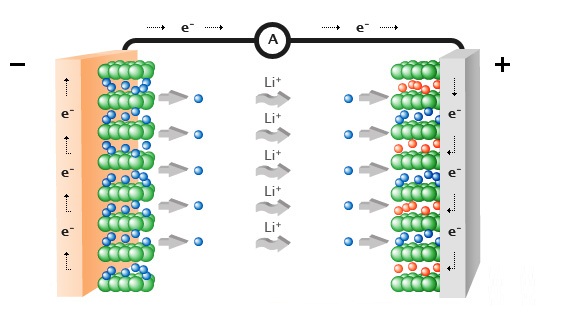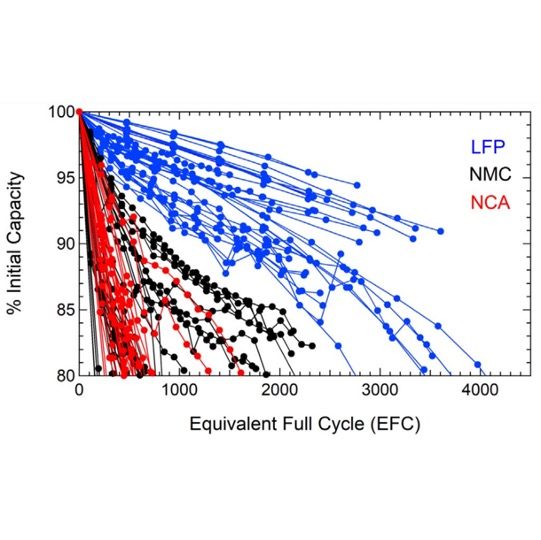Battery competition: LFP battery VS NMC battery.
Which is the best solar energy storage battery?
LFP battery or NMC battery? Which one is the best choice for building a solar energy storage system?
Lithium battery energy storage systems have received great attention in recent years. Due to the importance of batteries to humans (to store energy and make it available for use at any time). With continuous research and development, there are many choices in battery materials.
Battery materials are an important factor affecting battery performance, so comparisons with each other cannot be avoided. The two most commonly used chemistries in energy storage systems are lithium iron phosphate (LFP) and nickel manganese cobalt (NMC).
More and more companies are beginning to produce LFP batteries to replace NMC batteries for home energy storage, mainly because lithium iron phosphate batteries are safer and more stable.
But not all. There are still well-known companies using ternary batteries as the first choice for home energy storage. So which battery is more suitable?
The history and composition of lithium battery
Akira Yoshino made the first prototype of a Li-ion battery in 1985 based on the Nobel Prize-winning research of Yoshino, Goodenough, and Whittingham. A team at Sony made the first commercial Li-ion battery in 1991.
Lithium battery can be roughly divided into four components. These four components are the positive electrode, negative electrode, electrolyte, and separator. They are indispensable in the battery. Without one of them, the battery cannot function. What we call LFP battery and NMC battery refers to the material of the positive electrode.
When the battery charges, lithium ions move from the cathode to the anode through the electrolyte and are stored in the graphite structure. During the discharge process, lithium ions move back to the cathode, producing an electric current that can be used to power electronic devices.
What is LFP battery?
Cathode material: The cathode material of LFP battery is LiFePO4
Negative electrode material: The negative electrode is usually made of graphite or hard carbon.
Composition: In addition to the positive and negative electrode materials, the LFP battery also includes an electrolyte in which lithium salt is dissolved in an organic solvent, and a separator that isolates the positive and negative electrodes.
The recent fame of LFP battery is mainly due to the vigorous development of electric vehicles, which have excellent cycle life and high power. Its main attraction is the cost, as it is composed of very common materials (rich in iron).
What is NMC battery?
Cathode material: The cathode material of NMC battery is made of a combined oxide of nickel (Ni), cobalt (Co) and manganese (Mn), usually expressed as LiNiMnCoO2 (NMC). Different NMC battery will have different proportions of nickel, cobalt and manganese. Common ones include NMC111, NMC622 and NMC811.
Negative electrode material: The negative electrode is also usually made of graphite or hard carbon.
Composition: Similar to LFP battery, NMC battery also include electrolytes and separators.
NMC battery are also a good option to replace lead-acid battery and are a good combination of energy and power, but like many other lithium chemistries require nickel and cobalt, which are relatively expensive to source, although it provides more than LFP energy, but life is also shorter cycle life.
LFP Batteries & NMC Batteries Overview
| LFP Battery | NMC Battery | |
|---|---|---|
| Voltages | 3.20, 3.30V nominal; typical operating range 2.5–3.65V/cell | 3.60V, 3.70V nominal; typical operating range 3.0–4.2V/cell, or higher |
| Specific energy (capacity) | 90–120Wh/kg | 150–220Wh/kg |
| Charge (C-rate) | 1C typical, charges to 3.65V; 3h charge time typical | 0.7–1C, charges to 4.20V, some go to 4.30V; 3h charge typical. Charge current above 1C shortens battery life. |
| Discharge (C-rate) | 1C, 25C on some cells; 40A pulse (2s); 2.50V cut-off (lower that 2V causes damage) | 1C; 2C possible on some cells; 2.50V cut-off |
| Cycle life | 2000 and higher (related to depth of discharge, temperature) | 1000–2000 (related to depth of discharge, temperature) |
| Thermal runaway | 270°C (518°F) Very safe battery even if fully charged | 210°C (410°F) typical. High charge promotes thermal runaway |
| Cost | ~$200 per kWh | ~$420 per kWh |
What is the difference between lfp and nmc battery
Chemical materials
LFP are generally considered safer because they are more tolerant to overcharging and overheating. The thermal stability of lithium iron phosphate compounds makes LFP battery less likely to undergo thermal runaway under extreme conditions.
Due to the higher proportion of nickel used in NMC, NMC battery are more prone to thermal runaway when overheating, especially at high states of charge. The technical and chemical nature of NMC causes its temperature to rise during use and charging, requiring additional heat dissipation measures.
Additionally, the materials in LFP cells are much less toxic than those in NMC cells, making them easier to recycle at the end of their useful life.
However, the probability of fire between these two battery is still very low, and it is not said which battery can guarantee absolute safety. It is important to choose a good quality battery and maintain and repair the battery correctly.
Life span
You can easily see that the discharge capacity retention of LFP battery (blue data points) far exceeds that of NMC battery (represented by black data points). One charge/discharge cycle. The figure shows that NMC degrades almost twice as fast as LFP cells, demonstrating the superior overall performance of LFP cells.
They are therefore able to store and release more power over time than NMC battery.
A cheap, low-quality LFP battery may not last any longer than a high-quality NMC battery. All products in Pknergy are made of grade A LFP cells, and 80DOD can reach more than 7,000 cycles.
Cost
In terms of raw materials, LFP battery have lithium iron phosphate positive electrode (LiFePO4). The iron and phosphates used to make the cathodes are more abundant and cheaper than some of the materials used in NMC battery, mainly cobalt.
Judging from the current world policies, China has more LFP battery manufacturers, which has also led to an increase in LFP battery reserves. As technology accumulates or battery accumulate, prices will inevitably become even lower.
From the perspective of overall usage time, NMC may have some advantages in the early stages of purchase, but because the life of LFP battery is 4 to 5 times that of NMC battery. LFP battery will be the final winner.
performance
The energy density of NMC is about 250 Wh/kg and that of LFP is about 120-160 Wh/kg.
NMC battery have higher energy density, which means their physical size will be smaller than LFP battery of the same capacity. And the same amount of electricity will be lighter.
Usage environment
While all lithium-ion battery experience a decrease in capacity and power at low temperatures, NMC battery can withstand lower temperatures better. However, if your battery is installed internally, or your area doesn’t experience significant temperature extremes, you probably don’t need to worry about this.
In high-temperature environments, LFP performs better and is safer than NMC battery due to its high chemical stability.
Charging
LFP can be charged to 100% without reducing battery life; conversely, NMC cells should be limited to 80% to maximize life
LFP experience less performance degradation at higher temperatures and faster charge/discharge rates, so they are better suited to handle high-performance driving and fast charging.
Market choice
It can be seen that there will be obvious differences between LFP battery and NMC battery in different market areas. In automobiles, the market is more concerned about the weight of the battery and its tolerance to temperature. In home energy storage, most people choose LFP battery, which is a choice based on battery life and safety.
Conclusion
We recommend choosing LFP battery when building solar systems based on the above reasons. The first consideration for families is the safety performance of the battery, followed by cost.
As mentioned in the above article, although the initial cost of LFP battery is higher than that of NMC battery. However, if the project cost is viewed in ten years, the installation cost and labor cost required for each NMC battery replacement will be greater than that of LFP battery.
At Pknergy, you can have both safety and price. Learn about our high-quality and affordable home energy storage battery now.





